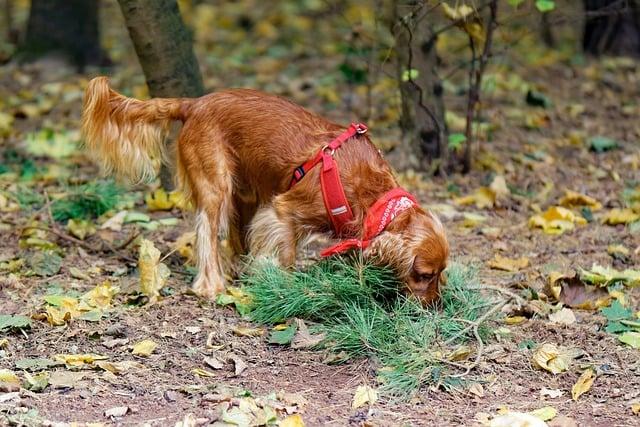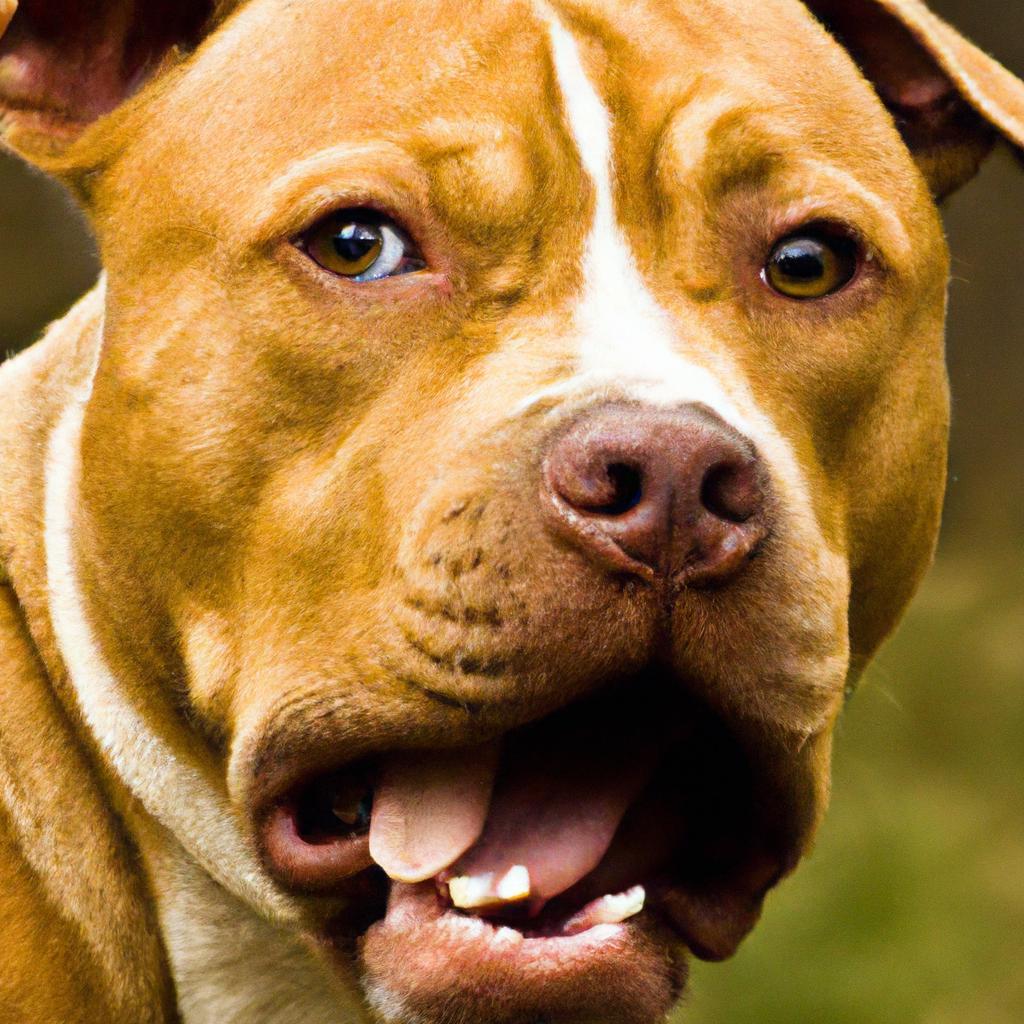In a quiet suburban neighborhood, a series of dog bites sent shockwaves through the community. The culprit? A seemingly friendly pit bull named Max. Despite his playful demeanor, Max had a history that few knew about. As families gathered to share their experiences, it became clear: understanding a dog’s background is crucial. The truth is, any breed can bite, but awareness and responsible ownership can prevent incidents. Let’s prioritize education and safety to ensure our furry friends remain beloved companions, not threats.
Contents
- Understanding the Breeds Most Frequently Involved in Biting Incidents
- Analyzing the Factors Contributing to Dog Aggression and Biting Behavior
- Implementing Effective Training and Socialization Strategies for Dog Owners
- Promoting Responsible Dog Ownership to Mitigate Bite Risks and Enhance Safety
- Q&A
Understanding the Breeds Most Frequently Involved in Biting Incidents
When examining the breeds most frequently involved in biting incidents, it’s essential to approach the topic with a balanced perspective. While certain breeds may have a higher incidence of bites reported, it’s crucial to understand that behavior is influenced by various factors, including training, socialization, and the environment. The following breeds are often highlighted in discussions about biting incidents:
- Pit Bull Terriers: Often at the center of media attention, Pit Bulls are known for their strength and tenacity. However, many advocates argue that their reputation is largely a result of irresponsible ownership rather than inherent aggression.
- Rottweilers: This breed is recognized for its loyalty and protective instincts. While Rottweilers can be involved in biting incidents, proper training and socialization can significantly mitigate risks.
- German Shepherds: Frequently used in police and military roles, German Shepherds are intelligent and versatile. Their biting incidents often stem from inadequate training or fear-based reactions.
- Chihuahuas: Surprisingly, smaller breeds like Chihuahuas can also be involved in biting incidents. Their bites may not be as severe, but their propensity to nip can be overlooked due to their size.
Understanding the context of these incidents is vital. Many bites occur due to fear, provocation, or lack of socialization rather than the breed itself. For instance, a dog that has not been properly socialized may react aggressively when feeling threatened, regardless of its breed. This highlights the importance of responsible pet ownership, which includes training, socialization, and understanding canine behavior.
Moreover, it’s essential to recognize that breed-specific legislation often fails to address the root causes of aggressive behavior. Instead of focusing solely on breed, a more effective approach involves promoting education about dog behavior and responsible ownership practices. By fostering a better understanding of how to interact with dogs and recognizing warning signs of distress, we can reduce the likelihood of biting incidents across all breeds.
Ultimately, the conversation surrounding dog bites should shift from breed blame to a broader discussion about responsible pet ownership and community education. By emphasizing training, socialization, and awareness, we can create safer environments for both dogs and humans, regardless of breed. This proactive approach not only benefits individual dogs but also enhances the overall perception of dog ownership in society.
Analyzing the Factors Contributing to Dog Aggression and Biting Behavior
Understanding the complexities of canine behavior is essential in addressing the issue of dog aggression and biting. Various factors contribute to a dog’s propensity to bite, and recognizing these can help prevent incidents. One significant factor is **genetics**; certain breeds are predisposed to aggressive tendencies due to their lineage. For instance, breeds that were historically used for guarding or protection may exhibit more aggressive behaviors if not properly trained and socialized.
Another critical aspect is **environmental influences**. A dog’s upbringing plays a pivotal role in shaping its behavior. Dogs that experience neglect, abuse, or lack of socialization during their formative years are more likely to develop aggressive tendencies. Additionally, the presence of stressors in their environment, such as loud noises, unfamiliar people, or other animals, can trigger defensive reactions. Owners must create a safe and nurturing environment to mitigate these risks.
**Training and socialization** are also vital components in preventing aggressive behavior. Dogs that receive consistent training and positive reinforcement are less likely to exhibit aggression. Socializing a dog with various people, animals, and environments from a young age helps them develop confidence and reduces fear-based reactions. Owners should prioritize enrolling their pets in obedience classes and exposing them to diverse situations to foster well-rounded behavior.
Lastly, **health issues** can significantly impact a dog’s temperament. Pain or discomfort from medical conditions can lead to irritability and aggression. Regular veterinary check-ups are essential to ensure that a dog is healthy and free from underlying issues that may contribute to aggressive behavior. By addressing these health concerns promptly, owners can help maintain their dog’s well-being and reduce the likelihood of biting incidents.
Implementing Effective Training and Socialization Strategies for Dog Owners
When it comes to ensuring a harmonious relationship between dogs and their owners, implementing effective training and socialization strategies is paramount. A well-trained dog is not only a joy to have but also significantly reduces the risk of aggressive behavior, including biting incidents. **Positive reinforcement** techniques, such as rewarding good behavior with treats or praise, can foster a trusting bond between the dog and its owner, making training a more enjoyable experience for both parties.
Socialization plays a crucial role in a dog’s development. Exposing your dog to various environments, people, and other animals helps them learn appropriate behaviors and reduces fear-based reactions that can lead to biting. Consider incorporating the following into your dog’s routine:
- **Puppy classes**: These provide a controlled environment for young dogs to interact with their peers.
- **Regular outings**: Take your dog to parks, pet-friendly stores, or community events to expose them to new experiences.
- **Playdates**: Arrange meetings with other friendly dogs to encourage positive interactions.
Consistency is key in both training and socialization. Establishing a routine helps your dog understand what is expected of them and reinforces their learning. Owners should set clear boundaries and commands, ensuring that everyone in the household is on the same page. This unified approach minimizes confusion for the dog and promotes a sense of security, which can deter aggressive behaviors.
Lastly, it’s essential to recognize the signs of stress or discomfort in your dog. Understanding their body language can prevent situations that may lead to biting. If your dog shows signs of anxiety or aggression, consult a professional trainer or behaviorist who can provide tailored strategies. By prioritizing effective training and socialization, dog owners can create a safe and loving environment that minimizes the risk of biting incidents and enhances the overall well-being of their canine companions.
Promoting Responsible Dog Ownership to Mitigate Bite Risks and Enhance Safety
Understanding the dynamics of dog behavior is essential for fostering a safe environment for both pets and people. Responsible dog ownership begins with recognizing that every dog, regardless of breed, has the potential to exhibit aggressive behavior if not properly trained and socialized. By prioritizing education and awareness, we can significantly reduce the risk of bites and enhance the overall safety of our communities.
One of the most effective ways to promote responsible ownership is through **comprehensive training programs**. These programs should focus on teaching dog owners how to communicate effectively with their pets, establish boundaries, and reinforce positive behaviors. Key components of these training initiatives include:
- Socialization with other dogs and people from an early age
- Consistent reinforcement of commands and good behavior
- Understanding canine body language to recognize signs of discomfort or aggression
Moreover, responsible ownership extends beyond training; it encompasses **proper care and management** of dogs. Owners must ensure their pets are well-exercised, mentally stimulated, and provided with a safe environment. This can be achieved by:
- Regular physical activity to reduce pent-up energy
- Engaging in interactive play to foster a strong bond
- Implementing secure containment measures to prevent escapes
Lastly, community involvement plays a crucial role in promoting responsible dog ownership. Local governments and organizations can facilitate workshops and outreach programs that educate the public on safe dog handling practices. By encouraging responsible pet ownership through community initiatives, we can create a culture of safety that benefits everyone. Together, we can work towards a future where dog bites are minimized, and the joy of canine companionship is celebrated responsibly.
Q&A
-
Which dog breeds are most commonly associated with bites?
Statistically, breeds such as Pit Bulls, Rottweilers, German Shepherds, and Chihuahuas are often reported in bite incidents. However, it’s essential to understand that any dog can bite under certain circumstances.
-
Are certain breeds more aggressive than others?
While some breeds may exhibit more protective or territorial behaviors, aggression is not solely determined by breed. Factors such as training, socialization, and environment play significant roles in a dog’s behavior.
-
What can be done to prevent dog bites?
Prevention is key. Owners should focus on proper training, socialization, and responsible ownership. Educating the public about safe interactions with dogs can also significantly reduce bite incidents.
-
Is it fair to label certain breeds as dangerous?
Labeling breeds as dangerous can be misleading. It is crucial to evaluate each dog as an individual. Responsible ownership and understanding a dog’s behavior are far more important than breed alone in assessing risk.
understanding which dog breeds are more prone to biting can empower potential pet owners to make informed decisions. Prioritizing safety and responsible ownership ensures a harmonious relationship between humans and dogs, fostering a safer community for all.

大家好,我是彼得潘,專業的手法身體治療師。我喜歡探索和研究各種主題,並透過與人工智慧的合作分享專業、實用、有趣的文章。我們定期進行人工審核,以確保內容的準確性。如果您發現文章中有任何不準確的地方,請隨時與我們聯繫,我們會及時糾正。您可以透過 [email protected] 與我們聯繫。



